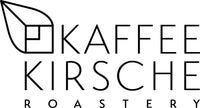Cupping – I like to sip it!

Why not do a little cozy cupping at home?
This article provides a somewhat simplified summary of the setup and process of cupping. Cupping—or coffee tasting—is about evaluating a coffee's aroma (smell and taste), acidity (over 80 different types), and body (intensity).
What you need for a cupping:
- different types of coffee
- Different vessels – two per type of coffee (cup, bowl or glass; it is important that they are the same vessels so that we have the same basis for evaluation)
- various coffees (10 g to 150 ml water)
- coffee grinder
- Kettle
- Glasses of water
- Spoons for tasting The spoons should have a capacity of 4–5 ml
- Kitchen towel / kitchen roll
And this is how it works – cupping in a few simplified steps:
- Grind 10 g of coffee very coarsely , 2 cups per coffee should be used to ensure uniformity
- Put the ground coffees into a container each (the containers must be identical)
- Smell and assess the ground coffee in dry state
- Pour in approximately 150 ml of 92–94°C hot water (if you don't have a kettle with a temperature setting, you can bring the water to a boil and then let it stand for approximately 2.5–3 minutes, after which it should have cooled to approximately 92–94°C).
- After pouring, a coffee crust forms on the surface. You can smell this crust again (careful not to burn the tip of your nose) and assess the coffee again.
- After 4 minutes, break the crust on the surface by gently stirring the surface with a spoon .
- Carefully skim the foam from the surface (please be careful not to dip the spoon so far that coffee grounds are stirred up from the bottom, preventing further extraction).
- After about 8-10 minutes, you can begin tasting. The coffee should now be at a temperature of approximately 70°C. Carefully scoop a spoonful of coffee from the surface and sip it with plenty of air.
First round – you sip the first spoonful when the coffee has a temperature of about 70 °C.
Second round – when the coffee has cooled down to approx. 60 °C (after approx. 5–7 min.)
Third round – when the coffee has cooled down further to room temperature
When tasting coffee, you slurp loudly because slurping causes you to inhale more air, allowing the aromas to rise up the throat and into the nose. The tongue can only distinguish five tastes: salty, sweet, sour, spicy, and umami (savory, savory, and piquant). Our nose detects the various subtle aromas and allows us to perceive the differences in the notes ( roasted coffee has over 1,000 identified aromatic compounds ).
The key to tasting coffee is to take your time and try it at different temperatures to assess the development of flavor and aromas. Feel free to smell the coffee before sipping. Be sure to rinse the spoon in clean water before tasting the next coffee to avoid tainting the aromas.
It's better to do the cupping at home with friends rather than alone, so you can share your impressions and taste discoveries afterward. As a rule, no talking is allowed during the cupping session to avoid influencing the other participants with your own impressions.
Of course, there's professional equipment for everything, such as cupping cups and special cupping spoons . However, you can also perform cupping with simple cups, bowls, or glasses and spoons. Make sure your cupping vessels are of the same quality.
Once a month, you can sip your way through our coffee selection with us. Every last Saturday of the month, we offer a free cupping session in our roastery. You can register for one of the following dates here . We look forward to discovering the variety of flavors of our coffees with you.
